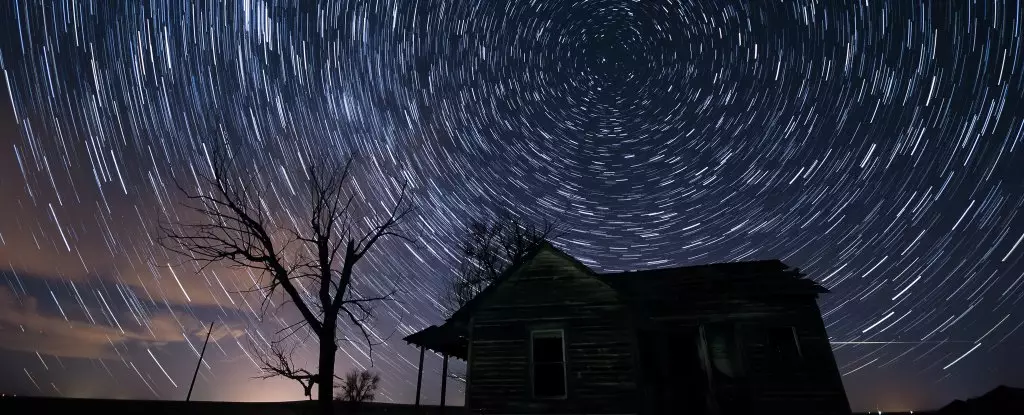In the realm of astronomy, January has always represented a time of new beginnings and celestial wonders. As we usher in 2025, the first weekend promises a rich tapestry of astronomical events that are sure to captivate both novice stargazers and seasoned observers. From meteor showers to planetary conjunctions, this month offers an exciting spectacle that beckons us to step outside, bundle up, and gaze into the cosmos.
Kicking off the year, the Quadrantid meteor shower will reach its peak on January 4th, with a notable projected Zenithal Hourly Rate (ZHR) of around 80 meteors per hour. What makes this particular meteor shower unique is its brevity; peaking rapidly between January 3rd and 4th, it necessitates timely observations. Observers focusing on the northern Pacific region may witness the best conditions at dawn. However, enthusiasts across North America and Europe should not be deterred, as the mornings surrounding the peak may still yield a spectacular show.
The origins of the Quadrantids can be traced back to the now-defunct constellation Quadrans Muralis. This once-established group has since been subsumed into neighboring constellations including Draco, Hercules, and Boötes. What remains intriguing is the historical aspect tied to this meteor shower, as it symbolizes the remnants of astronomical classifications prior to the standardization by the International Astronomical Union (IAU) in 1928.
The meteors are birthed from asteroid 2003 EH1, a distinct source that mirrors the characteristics of other meteor showers, such as the December Geminids emanating from rock-comet 3200 Phaethon. In stark contrasts to other meteor showers that may have prolonged displays, the short-lived nature of the Quadrantids often leaves observers yearning for more. The freezing temperatures typical of early January can further compound this problem, making it essential for observers to arm themselves with enough layers, hot beverages, and prepared equipment.
On January 4th, our planet reaches perihelion, marking its closest point to the Sun in its annual orbit, occurring at a distance of 0.98333 Astronomical Units (AU), close to 93 million miles. This moment, coinciding with the depths of winter in the Northern Hemisphere, presents an ironic twist. While northern regions are shrouded in cold and darkness, the Southern Hemisphere experiences summer’s warmth. This phenomenon, framed by the Milankovitch cycles—where the Earth’s orbital eccentricity, axial tilt, and precession of the equinoxes shift over thousands of years—underscores the quirky nature of our solar system.
Interestingly, the Sun appears slightly larger in the sky in January compared to July’s aphelion. As Earth draws nearer to its star, its apparent size increases, a captivating fact that can spark further curiosity among eager astronomers eager to deepen their understanding of celestial dynamics.
Adding to the allure of January skywatching, the Moon will occult Saturn on the same day, approximately at 17:24 Universal Time (UT). This striking event, best observed in Europe at dusk, occurs when the waxing crescent Moon glides in front of the rings and globe of Saturn. As the Moon obscures the planet, observers will witness a visually stunning sight as Saturn takes about 45 seconds to a minute to disappear entirely from view.
Such planetary occultations provide a valuable opportunity for casual observers and seasoned astronomers alike to witness a unique interplay between the celestial bodies. The rings of Saturn are slightly visible during this event, and with this year’s occultation paired with the proximity of Venus, avid skywatchers are in for a rare cosmic treat.
For those unable to witness the first occultation or living in areas where cloud cover predominates, they will still be able to enjoy a close pairing of Saturn and the crescent Moon. The upcoming month will also offer another occultation opportunity on February 1st for regions including the Canadian Arctic and Alaska.
In an era where virtual platforms unite enthusiasts and professionals alike, astronomer Gianluca Masi will host multiple online sessions encompassing the Quadrantid meteor shower, Saturn’s occultation, and the Moon’s close passage near Venus. As technological barriers dissolve, more individuals can engage in real-time discussions about these celestial occurrences, fostering a community passionate about exploration and understanding of the night sky.
As we brace for the winter’s chill, let us embrace the wonder of skywatching. Each event in January, from meteor showers to planetary alignments, serves as an invitation to connect with the universe. Whether you set out with friends, family, or venture alone, the cosmos waits patiently, ready to reveal its mysteries. For those who dare to look up, January 2025 offers a powerful reminder of the beauty and complexity of the universe that envelops us. Embrace the cold, fill your mugs with warmth, and enjoy the stellar performance that the first weekend of 2025 promises to deliver.

